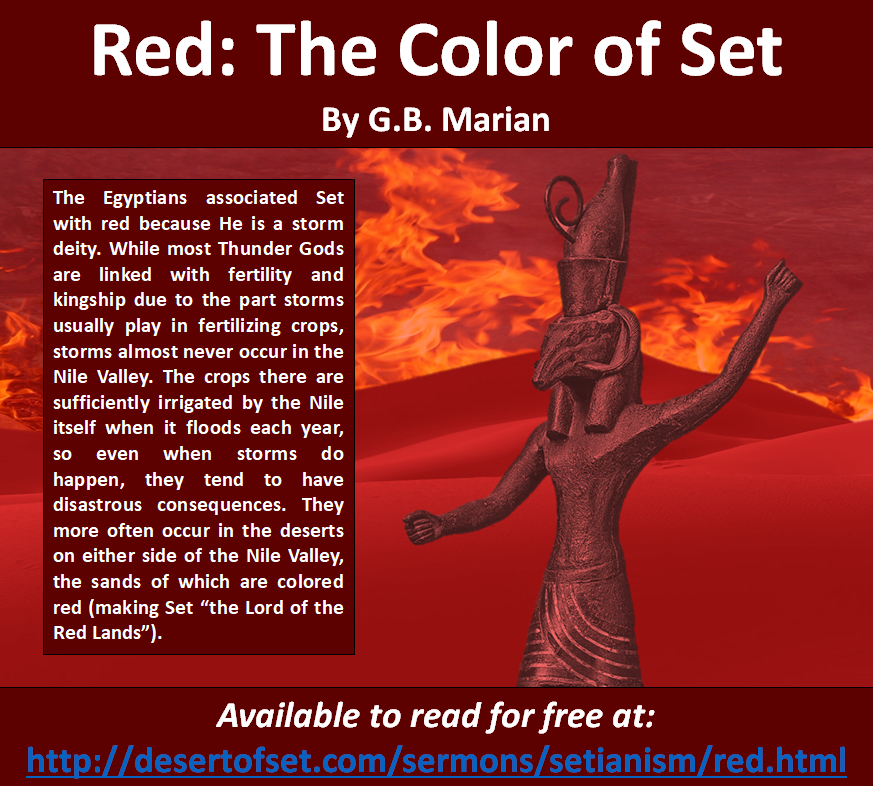

Red isn’t just a color; it’s a part of Set Himself. Or to put it another way, the Red Lord doesn’t just “like” the color red; He is the very essence of redness.
Within the spectrum of visible light, red exists between orange (where red meets yellow) and violet (where red meets blue). Technically, its wavelength is approximately 620–740 nanometers on the electromagnetic spectrum. It has historically been associated with aggression, blood, heat, lust, and passion. It’s also linked to the planet Mars and the sphere of Geburah on the Qabalic Tree of Life. Mars, of course, is named after the Roman God of war, who is often conflated with the Greek God Ares. (Hence why Mars is so often associated with hostile alien space invaders, as in H. G. Wells’ The War of the Worlds.) Geburah is where the gods pass judgment and destroy things, causing us all to be transformed (whether we want to be or not). It’s also the sphere where the gods take whatever steps they need to beat the crap out of evil.
Red is further linked to iron, which is likely because (1) there is actually iron in our blood and (2) Late Stone Age people often used ochre, a clay that is given a reddish tint by iron oxide. Even today, tribal peoples still use ochre to treat animal skins, repel insects, stop bleeding, and protect themselves from the sun. Red also continues to be the preferred color for warnings and danger signs (both in human society and in nature), with the highest threat levels being “red alerts.”
The Egyptians associated Set with red because He is a storm deity. While most Thunder Gods are linked with fertility and kingship due to the part storms usually play in fertilizing crops, storms almost never occur in the Nile Valley. The crops there are sufficiently irrigated by the Nile itself when it floods each year; so even when storms do happen, they tend to have disastrous consequences. They more often occur in the deserts on either side of the Nile Valley, the sands of which are colored red (making Set “the Lord of the Red Lands”). Red-haired animals and people were likewise linked with Set as well, and by the time He was completely demonized during the Late Period, it wasn’t uncommon for such animals and people to be killed as a way of execrating Him. Redheads continued to be demonized by European Christians, who thought such people were especially prone to “worshiping the devil” and becoming “witches.” This construct came from the Egyptians, who considered Set to be the original “red-headed stepchild.”
In many Typhonian spells from the Greek magical papyri, the directions call for magic words to be written in donkey’s blood (which is often described as “Typhon’s blood”). In the LV-426 Tradition, we think that harming any of Set’s sacred critters will definitely draw His attention to you, but not in a way that any sane or rational person would want. I do, however, think that the more red things you can include in your rituals, the better. I prefer to light red candles for the Big Guy, myself.
